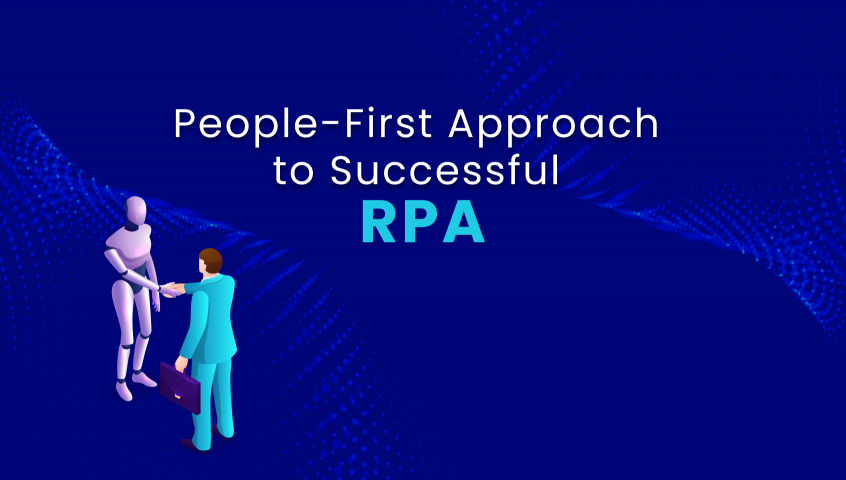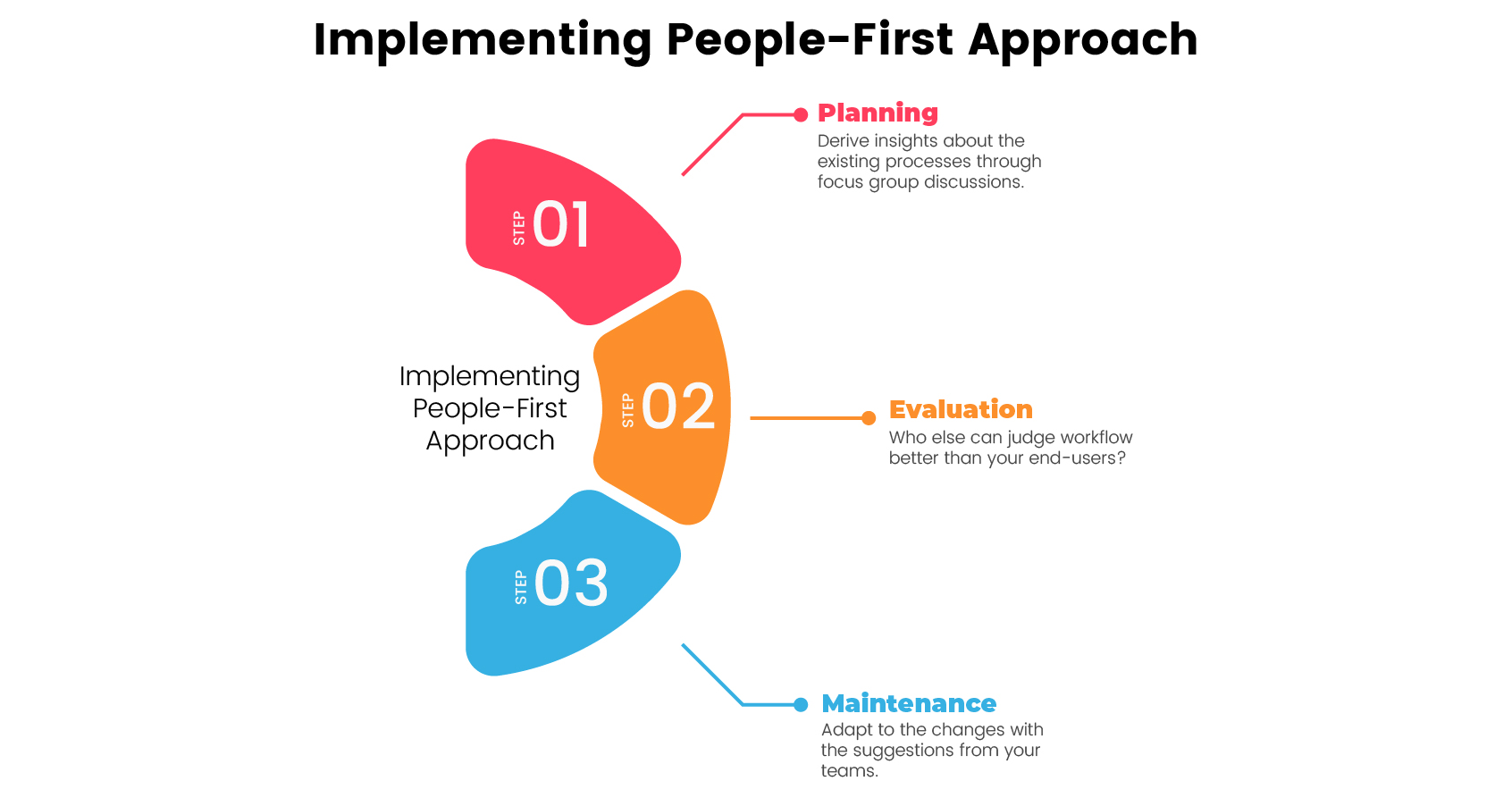
Robotic Process Automation is becoming popular among businesses looking to optimize their IT costs and improve operational efficiency. But technology alone does not make your organization more successful; it’s the approach you take while implementing RPA that leads to success or failure.
One of the biggest reasons for RPA failure is lack of people-first approach. It means that, when designing your RPA strategy, consider not only the operational needs of your business but also inputs from the people who will work on these processes to ensure success.
What is the People-First Approach?
It is always human beings that create value and not technology. When you view RPA from a technology-first approach, it can seem like a way for automating tasks. However, as we automate new processes, executives should ask:
- How will our end users engage with these processes?
- How can we enable effective collaboration between workers and systems?
These two questions will help organizations focus on empowering their workforce to drive greater business outcomes by viewing automation through a people-first lens.
Benefits of a People-First Approach
Empowerment – Each person knows what their role is right from the start. This helps to eliminate confusion and time spent figuring out what each person should do next.
Increased Efficiency – With RPA solutions, you can use multiple bots for automating regular mundane tasks so your people are focused on value generating activities.
In addition, having access to real-time reports allows leaders to assess quickly where bottlenecks are occurring and adjust as needed. For example, according to SHRM research, employers lose $2 billion due to low employee morale related to high turnover rates.
Explore More About SHRM Research
Adopting a people-first approach allows for greater creativity among your team members since their inputs are valued.
Business and Functional Requirements
Recognize that different departments have different goals. Take time to understand their concerns, needs, and expectations before rolling out on any process automation software.
Once you’ve developed your business requirements, address all functional requirements with end-to-end workflows across multiple systems. The more comprehensive your list of functional requirements is, the better prepared you will be when it comes to implementing RPA successfully.
It’s important to know whether human intervention will be required in the process (approvals etc.) so that you can determine whether RPA will fit into existing processes. Many RPA projects fail because they rely on faulty assumptions about current business processes. Knowing how things operate today will make development much easier later.
For an RPA project to become successful, it needs to be implemented in phases, rather than all at once. Deploying automation software in one department first is an excellent way of ensuring its success before scaling up across other areas – In other words start with a PoC and prove its value. This approach allows smaller successes along the way, which builds momentum and agreement for future phases of implementation.
From time to time, it is important to evaluate its effectiveness once RPA deployment happens. Talk to the Business stakeholders and ascertain additional areas where RPA can add more value.
Technology Considerations
Robotic Process Automation is a great addition to any business environment, but it’s not a panacea. Embrace Technology to improve efficiency and create better experiences for your stakeholders. Technology is and should always be an enabler!
When you want to explore RPA, you should assess the tools available in the market by building PoCs. During the evaluation phase, you will get an understanding of the various tool options, tying their capabilities to your requirements and ascertaining which one(s) will match your needs – Why not take advantage of their cost savings and increased efficiency potential?
Importance of End-Users in the People-First Approach
In a perfect world, everyone involved in an RPA project works towards a common goal in a collaborative fashion. However, this may not happen in the real world. The role of end-users is vital here. They have gone through understanding about the day-to-day processes. Leveraging this expertise increases the likelihood of RPA implementation being successful.
Implementing People-First Approach
The people-first approach is known as humanization. It is achieved when each of your employees is empowered, comfortable, and engaged with automation. It’s all about ensuring that their needs are being met and have visibility into changes that are planned.

RPA requires support from the entire organization before implementation. Help them understand the positive impact and possible ramifications before going live. Ensure your team knows that they are valued by involving them at every step of implementation, especially during User Acceptance Testing (UAT). This decreases the changes of disruption in workflows once process is automated.
The following are the steps to taken into consideration for the process to complete:
- You need to take time to educate your staff on RPA, address their questions and concerns immediately.
- Focus on the positive outcomes and how Automation is going to supercharge value creation.
- Training is very important and one should not rush through this.
Challenges in Adopting People-First Approach
Retooling, training people and rethinking all your existing workflows is no small task. If you do not have in-house talent who are empathetic, tech savvy and with sound understanding of your business, it may be difficult to create a solution that fits your business needs.
It’s essential to have a team that doesn’t mind taking risks because adopting an RPA approach will require trying a new technology and making it work towards your organizational goals. Most companies cannot take a set and forget approach while implementing bots into their operations. Successful implementation requires constant monitoring from both leadership and employees.
Conclusion
Ensure people across the organization are included in your RPA initiative, explore the possibility of reskilling employees, evaluate and identify the right toolset etc are necessary to ensure long-term returns on your RPA investments. If you need to talk to an expert before implementing RPA at your organization, please drop a note -> info@qentelli.com

